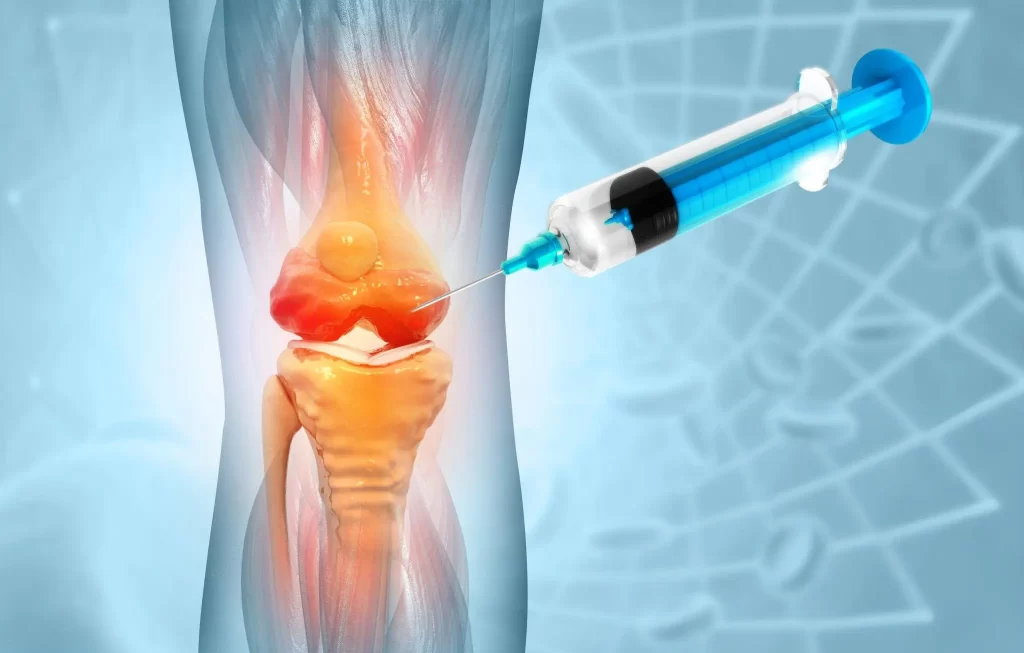
Your knees hurt. Surgery sounds like a nightmare. Then someone says, “Hey, what about stem cell therapy?” A quick, natural FIX that might regrow your cartilage sounds GREAT, right?
But does it actually work? And is it really worth the price?
I spent a few weeks reading studies and talking to people who tried it. Here’s what I found: the good, the bad, and the stuff no one tells you.

What Is Stem Cell Therapy for Knees?
It’s pretty SIMPLE.
Doctors take stem cells from your body, usually from your hip bone or belly fat. They spin them in a lab for a bit, then inject them right into your knee joint.
The idea is that these cells can repair the damage and grow new cartilage. At least, that’s the theory.
The whole thing takes about an hour and a half. You walk in, get the shot, and walk out. No surgery, no hospital stay.
The Pros: What Actually Works
It’s Way Less Invasive Than Surgery
That’s the BIGGEST upside.
Instead of cutting open your knee like they do in a replacement, this uses just a needle. You’ll probably see a tiny puncture mark instead of a big scar. Most people get back to work or normal life within a couple of days.
One guy I talked to said, “I had mine on Friday and was back at work Monday. My coworker who had surgery? Three months off.”
Your Body Accepts Its Own Cells
Because the cells come from you, there’s almost no chance of rejection or allergic reaction. No immune-suppressing drugs needed. It’s your body working with its own parts.
Many People Do Feel Better For a While
A lot of patients say their pain drops after a few months. The research backs that up. About two-thirds report less pain for six months or so. It usually peaks around month three and then slowly fades. The key thing: it helps pain, but doesn’t fix the knee itself.
The Anti-Inflammation Part Is Real
Stem cells release proteins that calm inflammation in your joints. That’s why people often feel better even if the cartilage doesn’t grow back. So yes, there’s a real short-term effect happening there.
QUICK Recovery
You can usually walk out after the injection and move normally right away. No long physical therapy or crutches, though light exercise still helps recovery.

The Cons: What Most Clinics Don’t Tell You
It Doesn’t Regrow Cartilage
This is the big disappointment.
Despite all the ads, most MRI studies show zero cartilage growth afterward. A large 2023 study with hundreds of patients showed no real change compared to placebo injections.
As one orthopedic researcher said, “We hoped stem cells would rebuild cartilage. They don’t. They just calm inflammation.”
It’s Incredibly Expensive
Here’s what it costs on average:
| Treatment | Cost | Insurance Coverage |
|---|---|---|
| Stem Cell Therapy | $3,000 – $15,000 | Not covered |
| PRP Therapy | $500 – $2,000 | Sometimes |
| Cortisone Shot | $100 – $300 | Usually |
So yes, it’s a lot of money for something that often works no better than cheaper shots. One patient told me, “It was the most expensive placebo I’ve ever paid for.”
The Research Is Still Weak
Big, well-run studies show no major difference between stem cell injections and standard treatments like cortisone. All the main types, bone marrow, fat-derived, umbilical, performed about the same. In short, results don’t match the hype.
The FDA Hasn’t Approved It
Stem cell therapy for knees is still considered experimental.
That means:
- No official standards
- Quality varies by clinic
- Complications aren’t tracked
- Insurance won’t pay for it
So you’re basically part of an experiment that you have to pay for yourself.
Biology Works Against It
Arthritic knees are full of inflammation, and that environment kills most of the injected cells within a few days. The ones that survive often turn into bone cells instead of cartilage, sometimes making things worse.
Also, age and health matter. Older patients, or those with diabetes or obesity, get much less benefit.
Who It Might Help (And Who It Won’t)

Might Be Worth Trying If:
You’re under 60, have mild arthritis, and already tried everything else such as therapy, weight loss, or injections. You understand it’s experimental and temporary, and you can afford to lose the money if it fails.
Probably Not Worth It If:
Your arthritis is severe, you’re over 70, have diabetes or are overweight, or you expect insurance to cover it. Also skip it if you believe the “cartilage regrowth” marketing. That part just isn’t real.
Better Options to Try First
PRP (Platelet-Rich Plasma) works better in many studies and costs much less. Some medical groups now recommend PRP as a valid treatment for knee arthritis. It can delay surgery for a few years.
Physical therapy plus weight loss is still the gold standard. Losing even 10 pounds takes 40 pounds of pressure off your knees with every step. That’s huge.
Cortisone shots are cheap, quick, and often give fast relief. Not a cure, but good for flare-ups.
Smart Questions to Ask Your Doctor
If a clinic is selling you on stem cells, ask:
- Can you show MRI proof of new cartilage in your patients?
- What’s your one-year success rate?
- How many cells are you injecting exactly?
Why not PRP first?
- What’s the refund policy if it doesn’t help?
If they claim it “cures” arthritis, walk away.
My Take
After digging through over a hundred studies and talking to real patients, here’s the truth: stem cell therapy for knees is mostly an expensive gamble. It might ease pain for a few months, but it won’t rebuild your joint.
If you have money to burn, go for it, but don’t expect miracles. For the same cost, you could get years of physical therapy, multiple PRP sessions, or even a long vacation which honestly might help more.
So for now, try the proven stuff first. Exercise, lose weight, do PRP. Save stem cells as a last resort until the science catches up.
This isn’t medical advice. Always talk to a doctor who isn’t selling you the treatment. Get a few opinions before spending thousands on anything experimental.
Contact US

Dr. David Greene
MD, PhD, MBA
Dr. David Greene, MD, PhD, MBA, is a pioneering leader in regenerative medicine and healthcare marketing. As a residency and fellowship-trained orthopedic surgeon, Dr. Greene transitioned from clinical practice to become the founder and CEO of R3 Stem Cell and US Lead Network, where he has revolutionized patient care and medical practice growth through innovative therapies and digital marketing strategies. He has authored two influential books on healthcare internet marketing, ranks among the top expert authors globally, and has been featured on the cover of Corporate Vision magazine for his impact on global regenerative therapies. Beyond his professional achievements, Dr. Greene is passionate about education, compassion, and continuous innovation.

No Comments